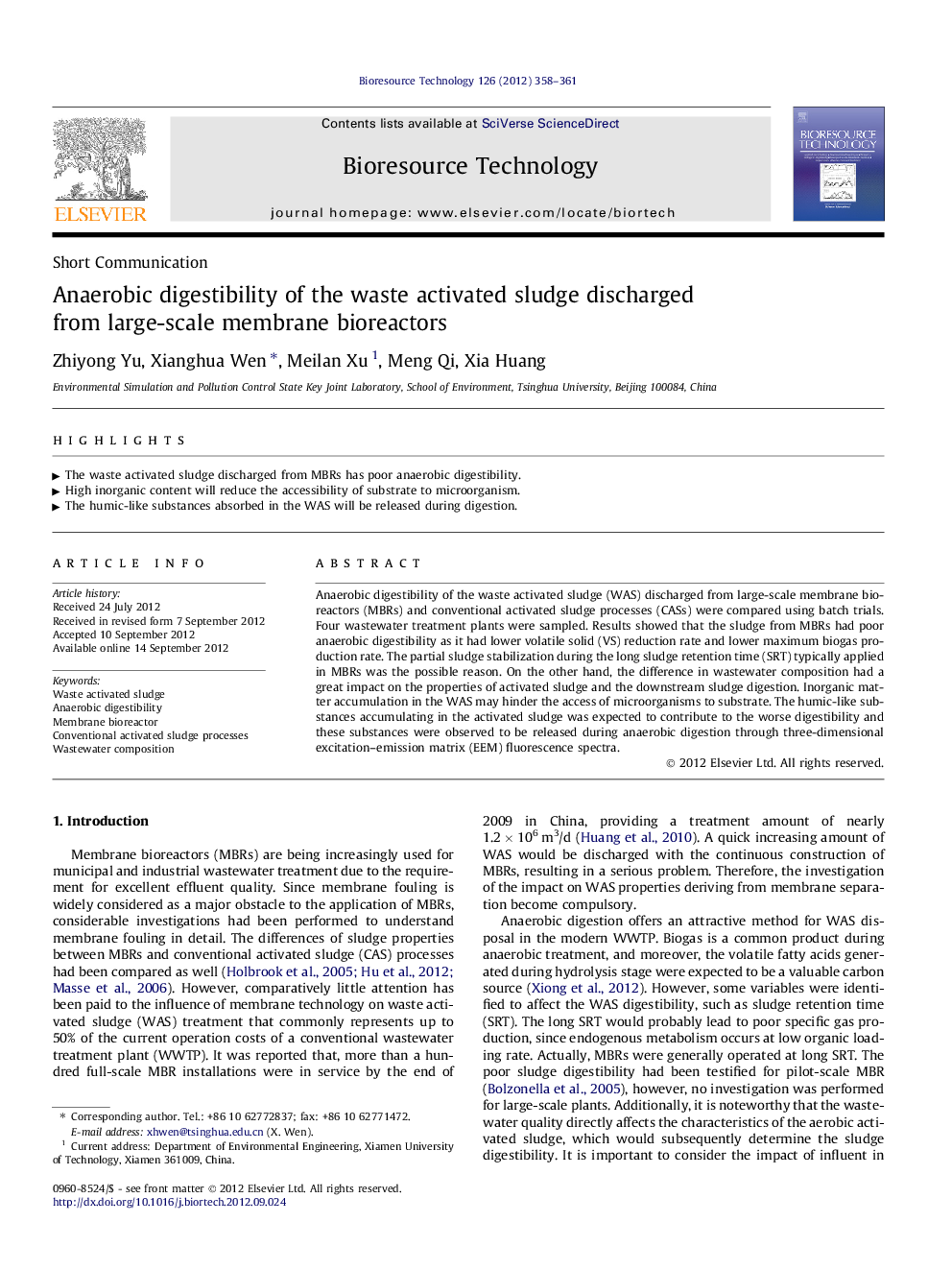| Article ID | Journal | Published Year | Pages | File Type |
|---|---|---|---|---|
| 681292 | Bioresource Technology | 2012 | 4 Pages |
Anaerobic digestibility of the waste activated sludge (WAS) discharged from large-scale membrane bioreactors (MBRs) and conventional activated sludge processes (CASs) were compared using batch trials. Four wastewater treatment plants were sampled. Results showed that the sludge from MBRs had poor anaerobic digestibility as it had lower volatile solid (VS) reduction rate and lower maximum biogas production rate. The partial sludge stabilization during the long sludge retention time (SRT) typically applied in MBRs was the possible reason. On the other hand, the difference in wastewater composition had a great impact on the properties of activated sludge and the downstream sludge digestion. Inorganic matter accumulation in the WAS may hinder the access of microorganisms to substrate. The humic-like substances accumulating in the activated sludge was expected to contribute to the worse digestibility and these substances were observed to be released during anaerobic digestion through three-dimensional excitation–emission matrix (EEM) fluorescence spectra.
► The waste activated sludge discharged from MBRs has poor anaerobic digestibility. ► High inorganic content will reduce the accessibility of substrate to microorganism. ► The humic-like substances absorbed in the WAS will be released during digestion.
